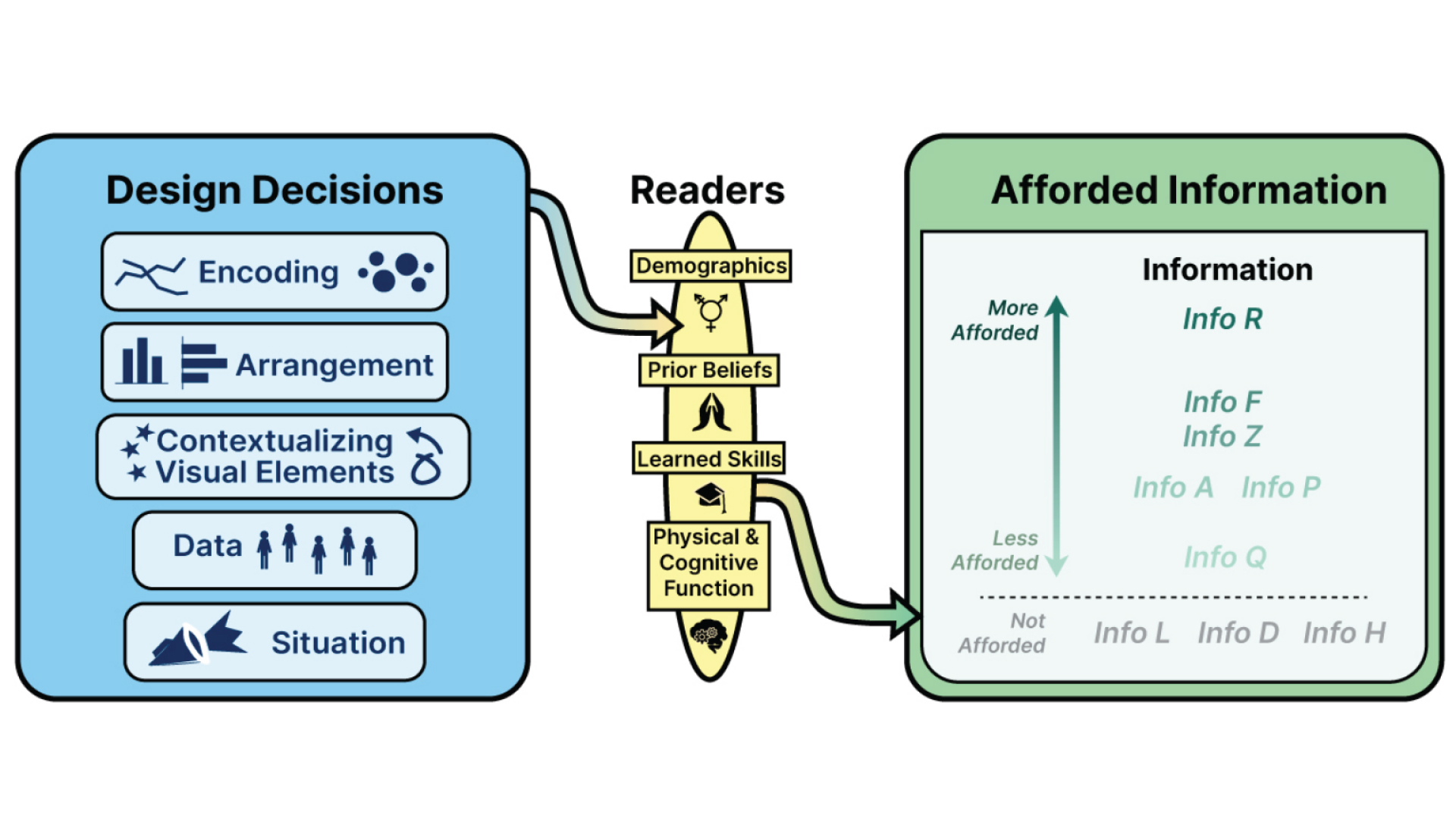Cognitive Affordances in Visualization: Related Constructs, Design Factors, and Framework

Abstract
Classically, affordance research investigates how the shape of objects communicates actions to potential users. Cognitive affordances, a subset of this research, characterize how the design of objects influences cognitive actions, such as information processing. Within visualization, cognitive affordances inform how graphs' design decisions communicate information to their readers. Although several related concepts exist in visualization, a formal translation of affordance theory to visualization is still lacking. In this paper, we review and translate affordance theory to visualization by formalizing how cognitive affordances operate within a visualization context. We also review common methods and terms, and compare related constructs to cognitive affordances in visualization. Based on a synthesis of research from psychology, human-computer interaction, and visualization, we propose a framework of cognitive affordances in visualization that enumerates design decisions and reader characteristics that influence a visualization's hierarchy of communicated information. Finally, we demonstrate how this framework can guide the evaluation and redesign of visualizations.
Citation
Cognitive Affordances in Visualization: Related Constructs, Design Factors, and Framework
Racquel Fygenson, Lace Padilla, and Enrico Bertini. IEEE Transactions on Visualization and Computer Graphics—TVCG. 2025.
Khoury Vis Lab — Northeastern University
* West Village H, Room 302, 440 Huntington Ave, Boston, MA 02115, USA
* 100 Fore Street, Portland, ME 04101, USA
* Carnegie Hall, 201, 5000 MacArthur Blvd, Oakland, CA 94613, USA



